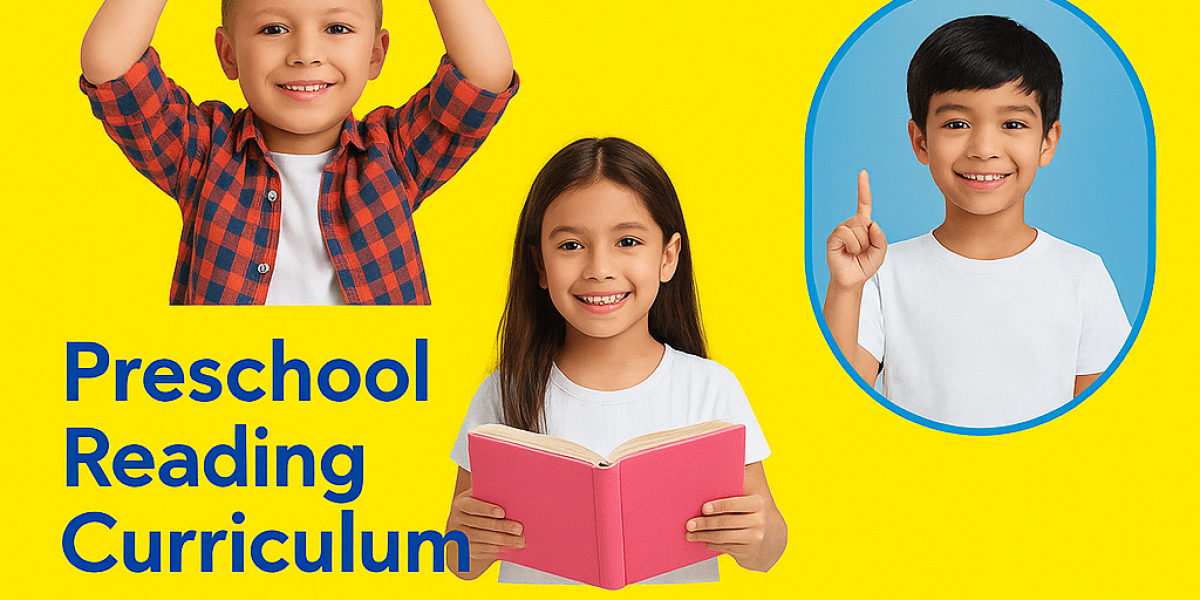Reading is one of the most important skills children begin to develop in their early years. A strong preschool reading curriculum helps children recognize letters, understand sounds, and build a love for stories. For 3- and 4-year-olds, the best way to learn reading is through storytelling and picture books, because children connect with stories faster when they can see and hear them together.
This guide will help parents understand what makes the best preschool reading curriculum, how storytelling supports language growth, and why picture books are essential tools in early education.
Why Preschool Reading Curriculum Matters
Before children enter kindergarten, they need a solid foundation in listening, speaking, and understanding words. A structured preschool reading curriculum introduces children to these skills in fun and playful ways.
When reading is introduced early, children:
· Develop stronger language skills
· Build better imagination
· Improve focus and memory
· Develop confidence in expressing ideas
At this age, it’s not about memorizing words—it’s about creating a natural love for books and stories.
Key Features of the Best Preschool Reading Curriculum
When choosing the best preschool reading curriculum, parents should look for these features:
1. Storytelling Activities
Stories keep children engaged while introducing new vocabulary and sentence patterns. Storytelling builds listening skills and sparks creativity.
2. Picture Books
Children understand words better when they see related pictures. Bright and colorful illustrations capture attention and make reading exciting.
3. Phonics Basics
A good preschool reading curriculum introduces children to sounds and letters in a fun way, using songs and rhymes.
4. Interactive Reading
Asking children questions during storytime encourages them to think and respond.
5. Play-based Learning
Games like matching letters, sequencing pictures, or role-playing from stories help children connect with what they read.
Storytelling in Preschool Reading Curriculum
Storytelling is one of the oldest and most effective teaching methods. For preschoolers, stories:
· Improve listening and comprehension
· Teach morals and values in a simple way
· Encourage children to imagine characters and situations
· Build strong memory skills
When parents or teachers read aloud with expressions, children enjoy the rhythm of language. This makes the preschool reading curriculum more interactive and memorable.
Role of Picture Books in Early Reading
Picture books are powerful tools in early education. For preschoolers, they:
· Make reading fun and less intimidating
· Teach new words through visual association
· Help children predict what will happen next in a story
· Improve focus by combining pictures with text
The best preschool reading curriculum always includes a wide variety of picture books, from simple stories with large illustrations to slightly longer ones with repetitive words.
Online Preschool Reading Curriculum: A Growing Choice
In today’s digital world, many parents look for an online preschool reading curriculum. These programs provide:
· Interactive story videos
· Digital picture books with animations
· Printable worksheets for practice
· Reading games to improve phonics
An online preschool reading curriculum is especially useful for busy parents who want structured learning at home. It allows children to learn at their own pace while still enjoying the fun of stories and books.
How Parents Can Support Reading at Home
Even with the best curriculum, parents play a big role in building reading habits. Here are some tips:
· Read aloud to your child daily, even if it’s just 10 minutes
· Let your child choose books based on their interest
· Use finger-pointing while reading to help them connect words with sounds
· Discuss the story—ask what they liked or what they think will happen next
· Keep a small book corner at home with picture books
These small steps make the preschool reading curriculum more effective and create lifelong readers.
Why Choose SmartK School for Reading Programs
SmartK School understands that children learn best through fun, structured, and interactive methods. Their programs combine storytelling, picture books, and phonics to create a complete preschool reading curriculum. Parents who want engaging and age-appropriate reading lessons for their little ones can trust that SmartK balances fun with strong learning foundations.
Final Thoughts
A well-structured preschool reading curriculum is not about making children read full sentences quickly. It’s about building curiosity, teaching them to enjoy books, and laying the foundation for lifelong learning. Storytelling and picture books are the perfect tools to make this happen.
Whether you choose an in-person program or an online preschool reading curriculum, remember that reading should always be fun, engaging, and full of imagination.
✅ FAQs on Preschool Reading Curriculum
1. What is the goal of a preschool reading curriculum?
The goal is to build listening, speaking, and early literacy skills through stories, picture books, and phonics basics.
2. How do picture books help preschoolers learn reading?
They connect words with images, making it easier for children to understand and remember new vocabulary.
3. Can I use an online preschool reading curriculum at home?
Yes, many parents successfully use online programs with interactive books and videos for at-home learning.
4. How long should daily reading time be for preschoolers?
Just 10–15 minutes of fun and engaging reading daily is enough to build strong habits.
5. What makes the best preschool reading curriculum?
A balance of storytelling, phonics, picture books, and play-based activities makes the most effective curriculum.








